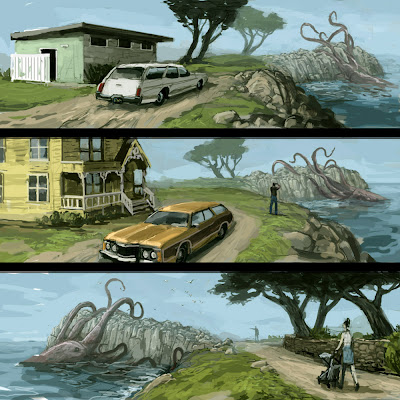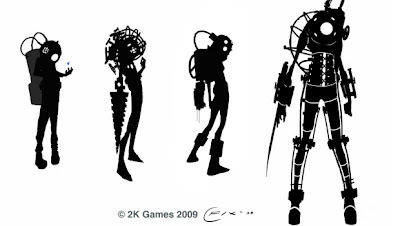For Wednesday, February 2, do 20 thumbnails of environment ideas. See above. Keep it loose and flowing. Don't spend too much time on any one thumbnail. The point is to practice getting an idea down in a pure form without being distracted by detail.
For Wednesday, February 9, work up 3 of your thumbnails into finished concepts. Do visual research to strengthen your ideas. Take some photo walks. By all means, use references for particular details of your places, but also use references for lighting, color, and artistic approach. Contemporary concept artists work with a huge range of techniques in working up to their final images; don't be afraid to experiment with photo collage and digital painting approaches. Mix and match!
Post your 20 thumbnails as well. We'll crit all this on Wednesday, Feb 9.
Preproduction concepts from Fallout 3 by Craig Mullins. A masterly example of collage/painting hybrid approach.
Alex Munn's work is more "painterly" but shows clear use of observed visual reference in the specific car models and architectural styles.
Make sure you work at a decent resolution (at least 2500 pixels wide or high)
REFLECTIVE ESSAY
Two parts:
1. Go to a location you've never been to before and write about the experience. How did you choose the spot? Why? Describe the sensations, what you noticed, how you felt being there. Describe the place physically, the quality of light, the color, sounds, sights, time of day, etc. What made this place a place?
2. Write about each of your three concepts. Describe the scene, the references you used, and the feel/effect you were going for.
Miles' straight drawing approach (using Flash) for The Melancholy















